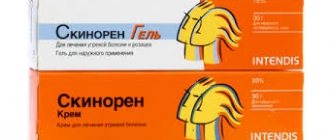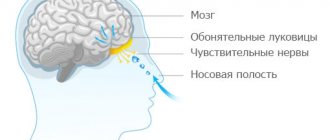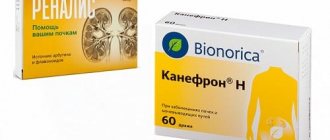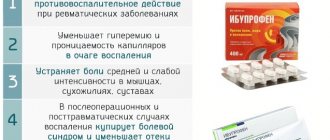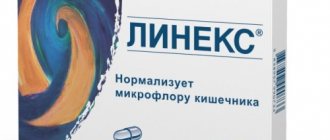The dynamically developing, young domestic Sotex introduced the drug Cereton to the market, which became its first brand. In 2007, it became one of five companies that received the title of the best domestic manufacturer of pharmaceutical products according to Pharmexpert. Choline alfoscerate, contained in the drug "Cereton", is an active ingredient related to nootropic drugs. The dual combined mechanism of action makes this drug unique. The first person to experience the effect of the new nootropic was a representative of Russian medicine, the head of the department of medical genetics, neurosurgery and neurology of the State Academy of St. Petersburg (SPbSMA) named after. I. I. Mechnikova, M. V. Aleksandrov, who is a candidate of medical sciences.
Composition and release forms
The medicine is available in the form of tablets and injection solution.
The basis of the chemical formula is the substance choline alphoscerate.
The active component has a nootropic effect, enhances metabolic processes in the central nervous system, and promotes the synthesis of choline.
Tablets (capsules)
A nootropic in tablet form is identified by the oval shape of the capsule, yellow or light brown color.
The body is soft, made on a gelatin base. The filler is transparent, oily, without a specific color.
One capsule contains 400 mg of choline alfoscerate. To enhance its effect, glycerol and purified water are used.
The body of the medicine is made of iron oxide yellow dye, gelatin, propyl parahydroxybenzoate, sorbidol, titanium dioxide, methyl parahydroxybenzoate, glycerol.
Contour plates with cardboard boxes are used for packaging.
Injections
In addition to the active substance, the pharmaceutical product contains only injection water. The solution appears to be clear and colorless.
Methods of using the product: intramuscularly and intravenously.
The liquid form of the nootropic is packaged in 4 ml ampoules + cardboard packaging + annotation.
The medicine "Cereton" is a very high-quality drug
According to M. V. Aleksandrov, it can be assumed that the drug “Cereton” is in no way inferior to the original drug; on the contrary, it has released a very high-quality analogue of domestic production, which is more affordable for Russian patients if we compare it with drugs used previously. Thus, this drug received the most flattering reviews. “Cereton,” according to M.V. Aleksandrov, refers, if we use the correct terminology, to neuroprotective drugs rather than to nootropics. They differ somewhat in their mode of action. Cereton is available in several dosage forms. Injections, reviews of which are mostly positive, capsules, as well as other drugs that include choline alfoscerate, are distinguished by the fact that they effectively affect the conduction of nerve impulses, which is the most important process in the nervous activity of any person. It is the quality of impulse conduction that directly affects the functioning of the brain, the departments responsible for brain trophism, which ensures a much higher recovery rate for lesions of various types.
The second difference between drugs of this class is the stabilization of brain activity, and specifically cell membranes. All metabolic activity is concentrated on the membranes, that is, their functioning directly affects the metabolism and the restoration of areas of the brain that are damaged proceeds faster.
Price
You can buy a nootropic drug according to the annotation upon presentation of a prescription. In reality, the drug is released freely.
- The cost of 400 mg tablets (14 pcs.) starts from 477 rub.
- Medicine in ampoules (250 mg x 3 pcs.) will cost from 252 rub.
Indications for use
The remedy in question is practiced in neurology and psychiatry.
The advisability of medication arises during the recovery period after:
- hemorrhagic stroke;
- TBI.
The medicine is also prescribed during the rehabilitation period after a hemorrhagic stroke, which occurs with symptoms indicating damage to the brain stem or with focal hemispheric symptoms.
Other uses of the nootropic:
- cognitive disorders;
- dementia;
- psychoorganic syndrome that developed due to degenerative and involutional changes in the brain;
- encephalopathy;
- senile pseudomelancholia.
Instructions for use
The treatment regimen is developed by the attending physician. This takes into account the patient’s condition and associated health problems.
During the recovery period after TBI or stroke, capsules are taken twice a day in the dose:
- in the morning – 800 mg;
- during the day – 400 mg.
Course duration is 6 months.
Dementia and cerebrovascular insufficiency, occurring in a chronic form, are treated as follows:
- regularity – 3 times a day;
- single dose – 400 mg;
- Duration of therapy is from 3 to 6 months.
The nootropic agent in the form of a solution is administered intramuscularly by slowly pressing the syringe plunger or intravenously by drip.
The daily norm is 1000 mg. A sodium chloride solution (0.9% - 50 ml) is used as the basis for the dropper. Infusion rate – from 60 to 80 drops/min.
The duration of the course is 10 days. As prescribed by the doctor, therapy can be extended.
The following factors must be taken into account:
- patient's age;
- clinical picture;
- disease dynamics graph.
As soon as the patient’s condition has stabilized, the drug is switched to an oral form.
It is allowed to increase the dose if the patient's condition requires it.
Vascular diseases of the brain are not only a medical, but also a social problem, being one of the main causes of mortality and permanent disability [1]. Not only acute, but also chronic cerebrovascular accidents are widespread. Patients with such disorders make up a significant proportion of patients in neurological hospitals and at outpatient neurological and therapeutic appointments.
Chronic cerebral ischemia (CHI) is a slowly progressive disorder of cerebral circulation of a multifocal or diffuse nature, resulting from the gradual accumulation of ischemic and secondary degenerative changes in the brain caused by repeated ischemic episodes. Manifestations of CCI, depending on the stage of the process, can vary from subclinical phenomena to signs of persistent neurological deficit in combination with emotional, personal and cognitive disorders [2-4].
Cognitive impairment often accompanies acute and chronic vascular pathology of the brain [5-10]. At the initial stages of CCI, cognitive disorders are observed that do not cause social maladjustment. Currently, such disorders are referred to as “mild cognitive impairment.” General criteria for RBM were proposed in 1999 by R. Petersen et al. [11]: 1) complaints of increased forgetfulness or decreased mental performance; 2) information about a decrease in cognitive functions in comparison with the patient’s previously available capabilities; 3) objective evidence of mnestic or other cognitive impairments compared to the age norm; 4) cognitive impairment that does not lead to loss of professional abilities or social interaction skills (although there may be a slight deterioration in complex and instrumental types of daily and professional activities); 5) lack of grounds for a diagnosis of dementia.
A decrease in cerebral blood flow triggers a cascade of pathophysiological mechanisms leading to damage to brain tissue [12]. Currently obtained fundamental and clinical data allow us to consider the primary effects of cerebral ischemia to be a decrease in the delivery of the substrate of energy metabolism, a delayed excretion of lactic acid, neurotransmitters and toxic substances involved in the ischemic cascade [13]. In ischemic areas of the brain, energy deficiency, “switching” to anaerobic glycolysis, cell overload with calcium ions, metabolic acidosis, and oxidative stress consistently develop, which in turn leads to the oxidation of lipids and proteins in the cell membrane [14]. With CCI, phospholipase A2 is activated, which increases the degradation of phosphatidylcholine, reduces the level of cell phospholipids and, consequently, deteriorates the function of nerve cell membranes and impairs the transmission of nerve impulses. Along with a decrease in the intensity of synthesis, release and binding of acetylcholine, this pathogenetic mechanism underlies the development of cognitive impairment in CCI [15-17].
Timely diagnosis of the disease, elimination of existing vascular risk factors, adequate choice of therapeutic tactics, correction of cognitive impairment, helping to curb the increase in neuropsychological disorders, can significantly improve the prognosis of the disease and preserve patients’ ability to work for a long time [18].
The main directions of pathogenetic therapy for CCI are the correction of vascular risk factors, arterial hypertension, hyperlipidemia, the use of antiplatelet agents or anticoagulants, depending on the nature of the cardiovascular pathology. For stenotic lesions of the brachiocephalic arteries, in some cases, the use of reconstructive vascular interventions is effective [19, 20]. But despite a fairly wide arsenal of drugs proposed in recent years for the correction of mnestic disorders, their therapy presents significant difficulties [21].
Currently, several randomized studies have been conducted that were aimed at correcting vascular risk factors using antihypertensive drugs, using statins and glycemic control [22], which, however, did not lead to the expected results. Therefore, other groups of drugs are also being actively studied.
Most often in clinical practice, drugs from the following groups are used for CCI: 1) acetylcholinergic - acetylcholinesterase inhibitors, acetylcholine precursors; 2) reversible blocker of NMDA receptors; 3) nootropic; 4) vasoactive; 5) neurometabolic. It is believed that the use of drugs that help normalize metabolism in the brain and have neurotrophic and neuroprotective effects can be of significant importance in treatment tactics [13, 23].
One of the drugs with proven neuroprotective and neurotrophic effects is choline alfoscerate (Cereton) [24]. This drug, penetrating the blood-brain barrier, is broken down into choline and glycerophosphate. Choline is involved in the synthesis of the neurotransmitter acetylcholine, and glycerophosphate is a precursor of phosphatidylcholine, a component of neuronal membranes. Choline alfoscerate also has a dose-dependent stimulatory effect on the release of acetylcholine from the presynaptic cleft, demonstrating the pharmacological effect of a central cholinomimetic. Experimental studies have shown that choline alfoscerate helps to replenish acetylcholine deficiency in the central nervous system, stimulate cholinergic neurotransmission, and restore the plasticity of cell membranes [25]. In recent years, confirmation has been obtained that choline alfoscerate has a neuroprotective effect that is not directly related to the stimulation of cholinergic neurotransmission. Thus, in a model of spontaneously hypertensive rats, its ability to slow down the development of astrogliosis and prevent the destruction of phosphorylated neurofilaments was demonstrated, thus preventing the death of neurons [26].
Several randomized, double-blind clinical trials [27-29] provided evidence of the effectiveness of choline alfoscerate (Cereton) in patients with various types of cognitive disorders (Alzheimer's disease, vascular dementia, age-related cognitive decline); The effectiveness of ceretone in patients with Parkinson's disease with cognitive impairment was also noted [30]. It is believed [31] that cereton therapy is most effective at the stage of MCI.
The purpose of this study is to study the effectiveness and safety of treatment with Cereton for CCI with MCI.
Material and methods
The study included 25 patients, 16 women and 9 men, aged from 45 to 59 years (average - 53.8±1.3 years). Patients were observed both in inpatient and outpatient settings. All examined patients complained of decreased memory and mental performance.
The criteria for inclusion of patients in the study were: the presence of MCI and the absence of severe cognitive deficits (MMSE scores of at least 24 points); duration of complaints of memory loss for at least 3 months; the presence of vascular risk factors (arterial hypertension, diabetes mellitus, coronary heart disease, smoking); absence of severe depressive, anxiety or hypochondriacal disorders; age from 45 to 65 years; patient consent to participate in the study. Exclusion criteria were: the presence of severe somatic pathology; degenerative damage to the central nervous system (Parkinson's disease, Alzheimer's disease, dementia with Lewy bodies, etc.); use of other nootropic drugs, antidepressants, antiepileptic drugs up to 3 months before the start of the study; hypersensitivity to ceretone.
All patients underwent clinical general somatic, neurological, neuropsychological examinations, as well as the necessary instrumental and laboratory tests.
To assess the severity of cognitive disorders, we used the Mini-mental state examination (MMSE), the Hospital Anxiety and Depression Scale (HADS), and the SF-36 quality of life questionnaire, which provides its quantitative determination using scales of the physical and mental subjective well-being of patients (maximum satisfaction corresponds to a score of 100 points); the doctor and patient filled out a questionnaire for subjective assessment of effectiveness: “no effect,” “weak effect,” “moderate effect,” “pronounced effect.”
Cereton was prescribed at a dose of 1000 mg in 200 ml of saline (in the form of infusion) for 15 days in a hospital setting, then on an outpatient basis, 1 capsule (400 mg) 3 times a day for 3 months. All patients underwent neurological and neuropsychological examinations before and after the course of treatment. Additionally, at the end of the intravenous administration of the drug, the doctor and patient filled out a questionnaire for subjective assessment of effectiveness, and at the end of the 1st and 2nd months of therapy with ceretone capsules, the drug intake was monitored and information about possible adverse events was obtained, which was carried out by contacting the patient phone.
Statistical processing of the research results was carried out using the method of variation statistics and correlation analysis using the Microsoft Excel 7.0 software package.
Results and discussion
At the time of inclusion in the study, patients complained of memory loss, difficulty remembering, difficulty concentrating, headache, dizziness and unsteadiness when walking, general weakness and increased fatigue, and decreased mood. The distribution of these symptoms in patients with CCI is presented in Table. 1
, and the main neurological manifestations of the disease are given in
table.
2 .
According to magnetic resonance imaging (MRI) of the brain, various changes were identified in the study group of patients (Table 3)
.
By the 15th day of therapy, a subjective improvement in the patients’ condition was noted in the form of the appearance of “clearing in the head”, a decrease in the intensity of headaches, a decrease in the severity of noise in the head and unsteadiness when walking, an increase in mental performance and a decrease in asthenia. When assessing the effectiveness of cereton treatment by the patients themselves at the end of the study, all study participants noted an improvement. Of these, 48% reported significant improvement and 36% reported moderate improvement. The subjective clinical effect of cereton began to appear on days 5-7 from the start of infusions; this effect stabilized by the 15th day.
Summary data assessing the effectiveness of cereton treatment by patients and doctors on the 15th day of therapy and after its completion are presented in table. 4
.
At the end of the course of therapy in all patients there was a significant ( p
<0.05) the frequency and intensity of headaches, dizziness, noise in the head, fatigue decreased, and objective manifestations of emotional instability decreased.
By the end of treatment, objective neurological symptoms also changed. The dynamics of neurological symptoms before and after treatment with cereton showed a significant decrease in the frequency of pyramidal symptoms (from 64 to 36%; p
<0.05), nystagmus (from 36 to 16%;
p
<0.05) and pseudobulbar disorders (from 32 to 12 %;
p
<0.05).
As mentioned above, neuropsychological testing of patients was carried out at the beginning of the study and at the end of the study. The initial level of cognitive impairment on the MMSE scale was estimated at 25.6±1.2 points; when assessing the attention function according to Schulte tables, the rate of performance averaged 57.6 ± 1.3 s, according to the “10 words” test, immediate reproduction of 5.3 ± 0.5 words and delayed reproduction after 10 minutes of 3.3 ± 0 occurred, 5 words. At the end of treatment, the severity of cognitive impairment on the MMSE scale was 28.7±1.2 points, the rate of performance was 46.4±1.2 s, short-term memory (10-word test) was 7.9±0.4 words and delayed memory - 5.1±0.6 words.
When studying the level of anxiety on the HADS scale (Fig. 1)
in patients with CCI before treatment with cereton, it was noted that 24% of patients had no symptoms of anxiety (5.7±0.4 points), 52% had subclinically expressed anxiety (9.1±0.5 points), 24% - clinically expressed anxiety (13.2±0.4 points).
Figure 1. Indicators of the level of anxiety and depression on the HADS scale in patients at the beginning and end of treatment with Cereton. The y-axis is points; *- differences are significant compared to the initial value at p<0.05. When studying the level of depression on the HADS scale, symptoms of depression were absent in 40% of patients (6.1±0.1 points), subclinically expressed depression was in 52% (9.4±0.2 points), clinically pronounced depression was in 2 (8 %) of patients (12.7±0.2 points). At the end of the full course of treatment, there was a decrease in anxiety and depressive symptoms. Thus, reliably expressed symptoms of anxiety were absent in 44% of patients (4.9±0.3 points; p
<0.05), 44% had subclinically expressed anxiety (8.4±0.2 points), 12% had clinically expressed anxiety (11.9±0.3 points;
p
<0.05).
Symptoms of depression were absent in 60% of patients (4.8±0.2 points), subclinically expressed depression was in 36% (8.7±0.3 points; p
<0.05), clinically pronounced depression was in 1 (4% ) patient (12 points).
As a result of testing patients for all indicators of the SF-36 “quality of life” questionnaire, all studied quality of life parameters were significantly higher in patients at the end of the study compared to the day of inclusion; the average score of the overall quality of life indicator was above 50. Patients noted an increase in internal energy when performing daily duties, sensitivity to some manifestations of physical pain decreased, and it had less impact on behavior and the amount of work performed. At the end of treatment with Cereton, patients also rated their “general perception of health” and “vitality” significantly higher. They noted a significant increase in social activity. These data are shown in Fig. 2
and in
table.
5 .
Figure 2. Indicators of quality of life in patients at the beginning and end of the course of treatment with Cereton according to the SF-36 questionnaire, points. The x-axis is the SF-36 subscales: PF - physical activity; RP - the role of physical problems in limiting life activity; BP - physical pain; GH—general health perception; VT - viability; SF - social activity; RE—the role of emotional problems in disability; MH - mental health. The y-axis is points; *—differences are significant compared to the initial value at p<0.05; ** - at p<0.01.
During the study, side effects of the therapy were noted in 3 patients in the form of palpitations and dyspeptic disorders, which were moderately expressed and did not require cessation of treatment.
The data obtained indicate that the use of cereton in patients with CCI and MCI makes it possible to achieve positive dynamics in the patients’ condition, as evidenced by subjective improvement and objective data. A positive effect of cereton on the complex of clinical manifestations of this pathology was noted, with significant improvement in the areas of memory, concentration, flexibility of thinking and mental performance. The use of the drug is well tolerated and lacks severe side effects.
For the treatment of MCI in patients with CCI, it is recommended to carry out multi-stage therapy: parenterally for the first 10-15 days, then 1 capsule (400 mg) orally 3 times a day for 3-6 months. A course of use of the drug Cereton during the treatment of patients with CCI has a positive effect on their quality of life.
Cereton can be used in neurological and therapeutic departments of hospitals, as well as in outpatient practice to correct the clinical manifestations of CCI.
Precautionary measures
- Taking a nootropic on your own or adjusting doses is strictly prohibited.
- The annotation states that during the period of use of the product it is prohibited to operate complex mechanisms or perform work that requires high concentration of attention. The medication does not affect the speed of psychomotor reactions, but the patient’s condition with cerebrovascular accident cannot be called stable.
- The drug in question does not have a mutagenic or teratogenic effect. It has no effect on the reproductive cycle.
Stabilization of membranes with Cereton
Some cells in any of the brain pathologies die immediately, and, unfortunately, nothing can be done about this, but quite a large part of them are in a stressful, “half-dead” state. If these cells are not helped, then they too may die in the future. The only way to save them is to stabilize the membranes, for which the Cereton product can be recommended. Reviews from doctors about its action are entirely positive. Yes, and research confirms this.
Efficiency
The pharmaceutical product is popular among doctors and patients.
This is due to the good tolerability of the composition and high therapeutic results.
Experts highlight the following advantages:
- the ability to activate the production of choline in the GM;
- improved blood flow;
- assistance in normalizing spatiotemporal factors of spontaneous bioelectrical activity of the brain;
- stimulating the production of phosphatidylcholine, acetylcholine;
- strengthening of metabolic processes in the central nervous system.
The medication helps restore consciousness, memory, and improve receptor function.
Nootropic Benefits
The medication works from the first hours after entering the body.
The result can be seen a couple of weeks after the start of therapy, even if the case is serious. The patient's sleep improves and the psycho-emotional background stabilizes. Activity appears and memory improves.
An important point is the low risk of adverse reactions. You should only pay attention to the presence of individual intolerance to the components of the drug and the coating.
The nootropic drug is convenient to take; there is no need to adjust to the timing of meals.
Other benefits include:
- acceleration of the recovery process;
- the ability to use different dosage forms;
- more affordable price than the original composition;
- minimum list of contraindications.
How to store
The conditions for containing the medication are subject to standard requirements.
Key points:
- stable temperature in the range of 5-25 degrees;
- no direct exposure to sunlight or proximity to heating devices;
- inaccessibility to the place of storage of children and animals.
The shelf life of the medicine is 3-5 years. After the period indicated on the packaging, any remaining drug must be discarded.
Prescription regimens
When asked about the most common prescribing regimens for this drug, the following reviews were received:
- "Cereton" is used in the same way as the drug "Gliatilin", prescribing it is not difficult for those doctors who are familiar with this medication.
- Switching to regimens that use Cereton is very simple: you need to mechanically transfer the old regimens to the new drug.
- Acute vascular pathology and traumatic brain injury are treated with intravenous drip administration of 1000 mg (equal to 1 ampoule - 4 ml of the drug) per day, 1-2 times a day. Duration of treatment - 5-10 days (in some cases - up to 15 days). A package of Cereton contains 5 ampoules, which means that the course will take 2-3 packages.
- Chronic vascular insufficiency of the brain allows treatment with intramuscular administration of this drug (4 ml equals 1000 mg per day) for 5-10 days, then you can switch to oral administration.
Reviews from patients who took the drug
Inessa, 34 years old:
The doctor prescribed Cereton to my mother after a head injury. At first they gave injections, then they switched to tablet form. There were no side effects during the therapy period. The drug is good!
Vladimir, 53 years old:
After a mini-stroke, I first took Recognan. Due to an adverse reaction, the doctor changed the drug to Cereton. The substitute is much better tolerated. The effectiveness is excellent, it was possible to quickly restore cognitive functions.
Within a month, he stopped stumbling and stood confidently on his feet without crutches. After a month, the fingers on my hand became more sensitive. In total, the rehabilitation period took 5 months.
Yulia, 40 years old:
The doctor prescribed Cereton for my mother for senile pseudomelancholy. 2 weeks after the start of therapy, the psycho-emotional background improved significantly, long-forgotten events began to emerge in my memory. Orientation in space has improved.
The product helped to recover, which increased the quality of life.
Reviews from neurologists
Kabanov A.I., medical experience 19 years:
I have been practicing Cereton for several years. The nootropic shows good results in organic pathologies of the brain, as well as in asthenic conditions. This is a worthy replacement for the original version of Gliatilin in terms of effectiveness, tolerability and price.
Silivanova R.M., medical experience 22 years:
Previously, I preferred to work only with original nootropic formulations. Cereton turned out to be an unusual exception. In efficiency it is not much inferior to the original. Well tolerated by patients. There are no more side effects and contraindications than the expensive analogue. The medicine is actively used in psychiatric and neurological practice.
Antonov B.I., medical experience 33 years:
Cereton is an excellent substitute for the original version. Improves the functions of the central nervous system, helps quickly recover from head injury, stroke. The composition promotes the restoration of cognitive functions. Eliminates dizziness, headaches, relieves tinnitus.
I prescribe the drug strictly intramuscularly. With the IV method, the patient experiences severe dizziness and nausea, even if the syringe plunger is pressed very slowly.
Analogs
If it is not possible to use the medicine in question for a number of reasons, the attending physician selects a suitable substitute from structural analogues and drugs that have identical pharmacological properties.
Medicines that have the same active ingredient include:
- Gliatilin;
- Holitylin;
- Gliakap;
- Cerpechol;
- Gliamedin.
Analogues of the drug Cereton with identical pharmaceutical properties:
- Recognan;
- Cerakson;
- Naypilept;
- Cortexin lyophilisate;
- Cavinton.
Only the attending physician who has a complete picture of the patient’s disease can select the optimal substitute.
Reviews from a professional
After the clinical testing of the drug “Cereton” at the clinic of medical genetics, neurosurgery and neurology of St. Petersburg State Medical Academy, M. V. Alexandrov was asked to talk about its results.
We received the following feedback from Candidate of Medical Sciences M.V. Aleksandrov: “Cereton” was indeed tested in comparison with the drug “Gliatilin”, which has been used for a long time and quite successfully by our well-known doctors. Both of these drugs contain choline alfoscerate, which is the active ingredient. The patients were divided into two groups, each of which had 10 people: in the first, the average patient age was 65.2 years, and in the second, 64.3 years. The groups also differed in the severity of the disease. In addition to traditional therapy, patients in the first group were administered the drug "Cereton" intravenously, starting from the second day, and patients in the second group were administered the drug "Gliatilin". The dosages and regimen were identical in both groups. No side effects were identified in any patient from both groups during treatment. After 10 days of treatment, changes in the condition of all patients were assessed using the Barthell scale. The functional state of patients from the first group improved on average by 18.9 points, and in the second group – by 17.9.
Cereton or Gliatilin: which is better?
The compared compositions are not only structural analogues.
Gliatilin is the original drug, and Cereton is its generic.
In terms of effectiveness and safety, the copy is slightly inferior, which is explained by the high bioavailability of the active chemical compound of the original version.
Generics look more advantageous in assessing the cost of pharmaceutical products. Its price is about a third lower.
There is no noticeable difference in ease of use.
Contraindications and adverse reactions are the same for the products.
According to experts, Gliatilin is absorbed better by the body, and the effectiveness of therapy is higher.
CERETON (capsules)
search.
For the son at that time was two and a half, and his vocabulary was limited to 10 words, half of which were invented by him. Just in case, I’ll leave here some more scraps from the instructions (in case someone might find it useful) and go directly to the reception.
TAKING THE DRUG I’ll tell you right away that the release form is not intended for children! Taking these gelatin capsules is inconvenient! And although the neurologist advised opening it and pouring the contents into a cup of water, this turned out to be not so easy. The capsule is solid, into two halves, like some medicines in powders, it does not divide, and picking it with a knife is also inconvenient, because it is also slippery. In general, a complete hassle! Then I decided to dissolve it in liquid. The first time I did this in cold water, the pill floated in the cup all day, but it didn’t make it any worse. But in warm water it becomes soft in just 5 minutes, it can easily be torn and the contents will flow out into the cup. So they drank, threw it in the morning, while they were getting ready to go to the garden, it became limp, and the son drank before going out. By the way, I also ate the capsule, just to be sure. I didn’t observe any side effects, although one night he scared us, woke up and started crying, pointing at his leg, so my husband and I realized that his leg was cramping. The husband immediately blamed Cereton for this and began calling the doctor, but she reassured him that it was absolutely not! Although, people far from medicine claim that this could have happened from a rush of blood to the head, but in my opinion, this is nonsense! My son did not experience increased excitability as from the Pantogam nootropic; he freaked out as usual. Although I was very afraid of it. In general, I tolerated the drug well and drank without any problems.
RESULT The neurologist warned that it is advisable to evaluate the result only three months after the end of the course of treatment. But I checked it out while it was still in progress. I can’t say that the child immediately started speaking in sentences, but he at least began to try to repeat what the adults told him. And in general, the vocabulary has been replenished with a dozen more words. At this point, about a month has passed since we drank Cereton. My son has more and more new words, and quite complex ones, like “droplets” and “pebbles.” “Synchrophasotron” has not yet been mastered, however. I started counting until three, because I just can’t (or don’t want to) pronounce the number 4.
I started asking questions like “What is this” and “Where is someone?” In general, it is noticeable that development has received a slight impetus. After the new year, we will go for a consultation with a neurologist again; it is possible that another course will be needed, and perhaps another drug may be prescribed. But Cereton certainly helped us advance a little!


